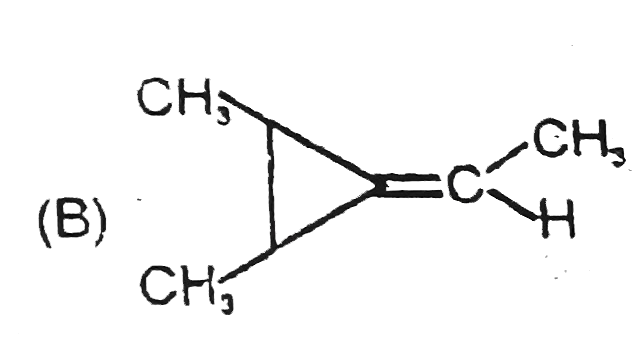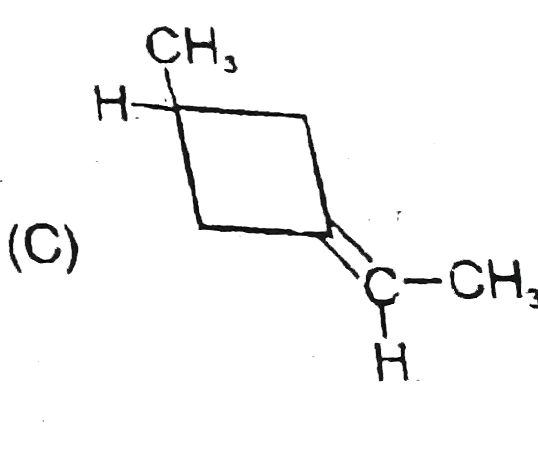Spin isomerism is shown by
Dichloro benzene
Hydrogen
Dibasic acid
n-butane
The correct Answer is:B
To solve the question "Spin isomerism is shown by," we need to understand the concept of spin isomerism and identify the relevant substance that exhibits this property.
1. Understanding Spin Isomerism:
- Spin isomerism is a type of isomerism that occurs due to the different alignments of nuclear spins of protons in a molecule.
- Isomers formed by changing the alignment of proton nuclear spins are called spin isomers.
2. Identifying the Substance:
- The question asks which substance shows spin isomerism. The most common example of a substance that exhibits spin isomerism is hydrogen (specifically dihydrogen, H₂).
- Dihydrogen (H₂) consists of two hydrogen atoms, each with one proton.
3. Characteristics of Hydrogen:
- Hydrogen has an atomic number of 1, which is odd.
- In dihydrogen (H₂), the two protons can align in two different ways:
- Ortho-hydrogen: Both protons have their spins aligned in the same direction (parallel).
- Para-hydrogen: The spins of the protons are aligned in opposite directions (antiparallel).
4. Conclusion:
- Since dihydrogen (H₂) can exist in two different spin states (ortho and para), it clearly demonstrates spin isomerism.
- Therefore, the answer to the question is that spin isomerism is shown by hydrogen (H₂).
Final Answer:
Spin isomerism is shown by hydrogen (H₂).
---
- Spin isomerism is a type of isomerism that occurs due to the different alignments of nuclear spins of protons in a molecule.
- Isomers formed by changing the alignment of proton nuclear spins are called spin isomers.
- The question asks which substance shows spin isomerism. The most common example of a substance that exhibits spin isomerism is hydrogen (specifically dihydrogen, H₂).
- Dihydrogen (H₂) consists of two hydrogen atoms, each with one proton.
- Hydrogen has an atomic number of 1, which is odd.
- In dihydrogen (H₂), the two protons can align in two different ways:
- Ortho-hydrogen: Both protons have their spins aligned in the same direction (parallel).
- Para-hydrogen: The spins of the protons are aligned in opposite directions (antiparallel).
- Since dihydrogen (H₂) can exist in two different spin states (ortho and para), it clearly demonstrates spin isomerism.
- Therefore, the answer to the question is that spin isomerism is shown by hydrogen (H₂).
Spin isomerism is shown by hydrogen (H₂).
Topper's Solved these Questions
- HYDROGENBOOK - AAKASH INSTITUTECHAPTER - HYDROGENEXERCISE - ASSIGNMENT (SECTION - D) (Assertion-Reason Type question)
15 Videos
- HYDROGENBOOK - AAKASH INSTITUTECHAPTER - HYDROGENEXERCISE - ASSIGNMENT (SECTION - B) (objective type question)
38 Videos
- HYDROCARBONSBOOK - AAKASH INSTITUTECHAPTER - HYDROCARBONSEXERCISE - Assignment(Section - D) (Assertion -Reason Type Question)
24 Videos
- M0ck test 26BOOK - AAKASH INSTITUTECHAPTER - M0ck test 26EXERCISE - EXAMPLE
40 Videos
Similar Questions
Knowledge Check
Ring chain isomerism is shown by which of the following pair?
A B
B C
C D
D
Geometrical isomerism is shown by ?
A B
B C
C DPh−CH=CH−CH3
DPh−CH=CH−CH3Optical isomerism is shown by octahedral complexes
Ahaving all monodentate ligandsBhaving all the three bidentate ligandsChaving two trans bidentate ligandsDhaving two trans monodentate ligands
